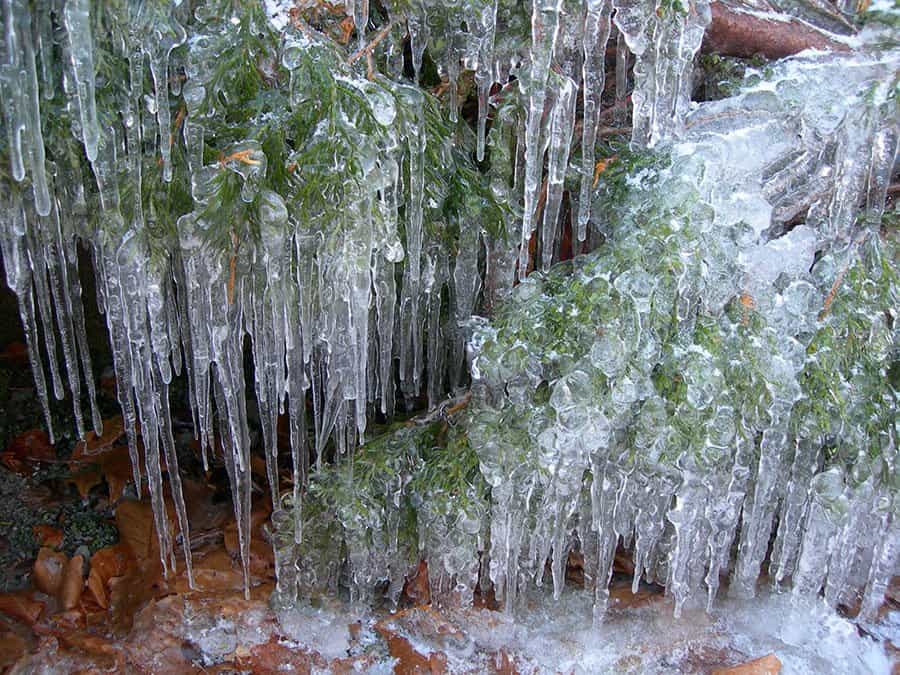
As we burrow under the bedclothes in a few months, let’s hope for a thick blanket of snow over the garden this winter. The structure of each snowflake contains layers of frozen water and air. As falling flakes pile up on the ground, more air is trapped within increasing layers of snow. This blanket of frozen water and air moderates winter soil temperature, keeping plant roots consistently cold, and preventing the heaving of roots out of the ground when exposed soil thaws in winter sunlight and freezes again in low night temperatures.
Small and newly installed clumps of perennials with shallow root balls are especially vulnerable to winter heaving. To help hold snow cover and keep roots in the soil, place branches from pruned shrubs and evergreens over plants after the ground has frozen. Snow will catch in the brush and provide a lasting winter blanket. (Branches cut from a discarded Christmas tree can be recycled for this purpose.)
No two snowflakes are alike and every snowfall is different. The ratio of frozen water and air contained within snowflakes is changeable, and weather conditions influence the weight of each flake. Snow containing more water than air is heavy, and hard to push or shovel. When heavy snow falls on evergreens, it causes the frozen branches to sag and bend, and they may break under the weight of the snow. If heavy snow is falling fast, monitor the accumulation on evergreens each hour. When accumulation on branches is one inch (2.5 cm) thick, use a rake or broom to gently knock the snow off. Frozen branches are brittle and easily broken, so it’s better to remove snow frequently throughout a snowstorm, rather than allowing it to accumulate.
And then, there is ice. A classic ice storm that coats limbs and trunks with glistening layers of ice is a beautiful sight, but also the source of much damage to trees and shrubs. The weight of accumulated layers of ice on frozen wood can cause branches to twist and snap, and is often referred to as nature’s way of pruning weak wood. There is little that can be done when ice coats tall woody plants, except to be mindful of the potential for damage that may need to be attended to in better weather. (If ice coats dormant flower buds during a cold snap, the ice may act as protective insulation against extreme low temperatures.)
Evergreens retain their foliage during winter, reducing water content in needles and concentrating their sugars and essential oils. (You may have noticed that evergreens have their best scent in winter.) However, they are still transpiring moisture during cold months, and accumulated ice may burn their foliage. Ice can be removed with a gentle nudge from a rake or broom; or for resistant ice, use your bare fingers to gently push it off, remembering that the frozen wood is brittle and won’t bear too much manipulation. Large sections of ice on evergreen branches can be loosened by a short blast from a hand-held hairdryer (on the lowest heat setting), using a long extension cord. If ice has splayed out and flattened sections of cedar shrubs, it’s best to leave them as they are; they usually rebound to their natural upright position in spring.








